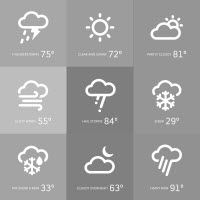Immune markers and pollutant levels in the blood indicate wildfire smoke may be more harmful to children’s health than smoke from a controlled burn, Stanford researchers found.May 30 2019Children were exposed to higher air pollutant levels during a California wildfire than during a similar-sized controlled burn, and the difference was reflected by changes in immune markers in their blood, a new study from the Stanford University School of Medicine has found.
The finding suggests that using prescribed burns, also called controlled burns, to reduce fuel levels in forests may protect the health of people who live nearby.
The study was published May 30 in the European Journal of Allergy and Clinical Immunology. It was conducted in Fresno, California, a city with high air pollution levels due to its topography and other sources, including traffic and agriculture.
“This study suggests that exposure to wildfire smoke is detrimental above and beyond poor air quality,” said the lead author, Mary Prunicki, MD, PhD, an instructor of medicine.
The study’s senior author is Kari Nadeau, MD, PhD, professor of medicine and of pediatrics and director of the Sean N. Parker Center for Allergy & Asthma Research at Stanford.
Native Americans traditionally used controlled burns to manage California’s forests, but throughout the early 20thcentury, wildfires were widely suppressed. This began to change in the 1960s and 1970s, when scientists recognized fire as a normal part of forest ecology. Recent wildfires have brought more attention to the possible benefits of prescribed burns as a way to reduce fuel levels and wildfire risk, but not everyone is enthusiastic.
Opposition to controlled burns“We know that there’s some public opposition to doing prescribed burning,” Prunicki said. “It’s our feeling that prescribed burning, because it’s so controlled, may expose people to fewer health effects than wildfires.” Prescribed burns are of lower intensity and are permitted only when weather conditions allow the fire to be contained.
In the study, the researchers compared blood samples from three groups of children, all of whom were 7 or 8 years old. One group of 32 children had been exposed to smoke from a 553-acre prescribed burn that occurred in March 2015; a second group of 36 children had been exposed to smoke from a 415-acre wildfire in September 2015. Both fires were about 70 miles away from Fresno, and blood samples were collected from the children within three months of each fire.
The study also included blood samples from a control group of 18 children who lived in the San Francisco Bay Area and had not been exposed to wildfire or prescribed-burn smoke.
The researchers measured air pollution levels recorded at four monitoring stations in Fresno and estimated pollution levels at the children’s homes during the fires based on how far they lived from the stations.
Pollutant exposures were higher in the wildfire group compared to the prescribed-burn group. The air pollutants measured included nitrogen dioxide, polycyclic aromatic hydrocarbons, elemental carbon, carbon monoxide and particulate matter.
Wildfire smoke exposure was associated with lower blood levels of type-1 T helper cells, a group of immune cells that are involved in the immune response. Among children exposed to wildfire smoke, the researchers also saw increased methylation of the Foxp3 gene, indicating reduced activity of this gene, which is broadly involved in modulating allergic and other immune responses. The finding of greater Foxp3 methylation is congruent with earlier studies of the effects of air pollution on the immune system, Prunicki noted.
Significance of particulate matterOne important aspect of the study was that the September 2015 wildfire was confined to forested areas and did not burn any structures.
“Particulate matter from wildfires is different from region to region and depends on what is burning,” Prunicki said. “When a wildfire is going through a town, there are a lot of concerns about what happens to the chemicals in people’s homes and cars when they go up in flames.” Smoke from wildfires that burn inhabited areas almost certainly has worse health effects than those found in the current study, she said.
The researchers plan to conduct larger, more detailed studies of the effects of wildfire smoke on health. They will be enrolling healthy people in a trial at Stanford later this summer to collect baseline data from blood samples. When future wildfires affect Bay Area air quality, the participants will be asked to provide follow-up blood samples. For more information, email Prunicki.
The scientists also plan to research the health effects of using home air purifiers during wildfires, as well as measure the protection offered by N95 masks, with the aim of developing recommendations for when masks should be used by different populations, such as healthy adults, elderly people, children and people with chronic illnesses.
The study’s other Stanford co-authors are biostatistician Justin Lee; life science researcher Xiaoying Zhou, PhD; Francois Haddad, MD, clinical associate professor of medicine; and Joseph Wu, MD, PhD, professor of medicine and of radiology.
Nadeau is a member of Stanford Bio-X, the Stanford Maternal & Child Health Research Institute and the Stanford Cardiovascular Institute.
Scientists at The Nature Conservancy also contributed to the research.
The research was funded by The Nature Conservancy, the National Institute of Environmental Health Sciences (grantsR01ES02092 and 3R01ES020926); the National Heart, Lung and Blood Institute (grant R01HL081521); and the Sean N. Parker Center for Allergy and Asthma Resea
